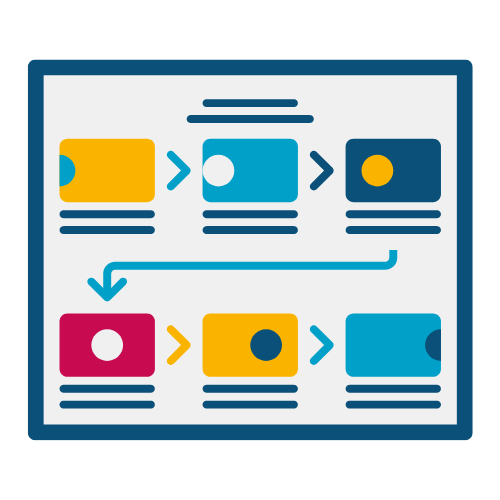Storyboards are an essential part of the web design process. They serve as a visual guide that outlines the user journey and helps designers and developers understand the overall flow and structure of the website. Storyboards can also help clients and stakeholders better visualize the end product and provide feedback early on in the design process.
In this article, we’ll dive deeper into what a storyboard is and how it can benefit your web design project.
What is a Storyboard?
A storyboard is a visual representation of a website’s structure, layout, and functionality. It’s essentially a sequence of sketches or wireframes that outlines the key elements of the user experience. A storyboard can include images, text, and notes that explain the user journey and highlight important features and interactions.
A storyboard can take different forms depending on the project’s needs and the designer’s preferences. Some storyboards are hand-drawn on paper or whiteboards, while others are created digitally using design software such as Adobe XD, Sketch, or Figma. Regardless of the format, the goal of a storyboard is to provide a clear and concise overview of the website’s design and functionality.
Why are Storyboards Important in Web Design?
There are several benefits to using a storyboard in web design:
- Visualize the User Journey: A storyboard provides a visual representation of the user journey, including how users navigate through the site, interact with different elements, and complete tasks. This allows designers and developers to better understand the user experience and identify potential pain points or areas for improvement.
- Communicate Ideas Clearly: A storyboard can help designers and clients communicate ideas and concepts more clearly. Instead of relying on verbal descriptions or abstract concepts, a storyboard provides a concrete visual representation of the website’s design and functionality. This can help clients better understand the project’s scope and provide feedback early on in the design process.
- Save Time and Resources: By creating a storyboard early on in the design process, designers can identify potential issues or challenges and make changes before investing significant time and resources into development. This can save time, money, and frustration down the road and ensure a smoother development process.
- Streamline Collaboration: Storyboards can help streamline collaboration between designers, developers, and clients. By providing a visual representation of the website’s design and functionality, stakeholders can provide feedback and make changes more easily. This can help ensure everyone is on the same page and working towards the same goals.
- Improve User Experience: By visualizing the user journey and identifying potential pain points, a storyboard can help designers create a more intuitive and user-friendly website. This can improve user engagement, increase conversions, and ultimately drive business results.
How to Create a Storyboard for Your Web Design Project
Creating a storyboard can be a time-consuming process, but it’s an essential step in the web design process. Here are some steps to help you create a storyboard for your next project:
- Define the Project Goals: Before creating a storyboard, it’s important to define the project goals and objectives. This can help guide the storyboard creation process and ensure that it aligns with the overall project vision.
- Identify User Personas: User personas are fictional characters that represent different types of users who may interact with the website. By identifying user personas, you can better understand their needs, motivations, and behaviors, and design a website that meets their needs.
- Create a Site Map: A site map is a visual representation of the website’s hierarchy and structure. It outlines the main pages, subpages, and content categories, and provides a high-level overview of the website’s organization. This can help inform the storyboard and ensure that it aligns with the site map.
- Sketch Out Key Elements: Once another important consideration when creating a storyboard is the user experience. It’s essential to have a clear understanding of the target audience and their expectations. By incorporating user feedback, designers can ensure that the storyboard accurately represents the desired user experience.
When developing a storyboard, it’s important to keep in mind the overall design goals and objectives. The storyboard should be designed to facilitate the realization of these goals, such as increasing user engagement or improving website functionality. To achieve these objectives, designers may incorporate elements such as calls to action, navigation menus, or interactive features.
Overall, storyboards are an invaluable tool for web designers. They allow designers to visualize the overall design and layout of a website, ensuring that it meets the needs of the user and the business. By providing a clear framework for the design process, storyboards help designers to create a more cohesive, user-focused website that is optimized for the intended audience.
Conclusion:
A storyboard is a visual representation of a website’s design and functionality. It is used to communicate the overall layout, features, and user experience to stakeholders, developers, and designers. By creating a storyboard, designers can ensure that the website meets the needs of the user and the business, while also providing a clear framework for the design process. If you’re planning a website design project, be sure to consider the benefits of creating a storyboard to facilitate the design and development process.

